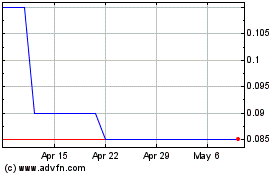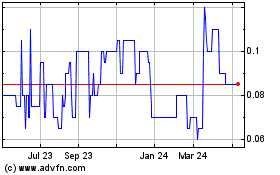Compass Gold Corp. (TSX-V: CVB) (Compass or
the Company) is pleased to provide an update on
the recently completed diamond drilling at the Tarabala prospect,
located on the Company’s Sikasso Property in Southern Mali
(
Figure 1).
Highlights
- Drilling at the Tarabala prospect tested 400 m of a
1,000 m zone, a pronounced, broad, shallow gold target, associated
with a shear zone
- Higher-grade mineralized zones intercepted within wide
zones of low-grade mineralization; remains open
down-dip
- Widest interval of low-grade mineralization was 32 m at
0.33 g/t Au (from 61 m), including 0.5 m @ 4.07 g/t Au (from 85
m)
- Best interval: 17 m at 0.96 g/t Au (from 101 m),
including 3 m @ 3.36 g/t Au (from 108 m)
- Highest-grade interval: 1 m @ 19.81 m (from 31
m)
- Deep soil auger drilling has just been completed on a
southern extension of the Tarabala Trend within the newly
acquired Moribala permit
Compass CEO, Larry Phillips,
said, “Our deeper drilling on the Tarabala prospect has intercepted
wide intervals of low-grade mineralization punctuated with some
much higher gold grades. Although these sections have not
demonstrated the continuity required for a standalone,
open-pittable gold resource, we remain confident that the Tarabala
Trend has strong potential to host a concentrated zone of
mineralization. We have acquired the right to explore
approximately an additional 6.5 kilometres of this trend. Dr.
Madani and his team have just finished an auger drilling program on
our new Moribala permit, where shallow soil sampling during the
summer returned a gold assay of 43.6 g/t Au. This is one of
the highest recorded gold grades from southern Mali, located just
10 km to the south of the Tarabala target zone.”
Dr. Sandy Archibald, PGeo, Technical
Director, added, “I am gratified to see that our deeper
drilling at the Tarabala prospect has revealed both wide and
higher-grade zones mineralized zones, underlining the potential
associated with the Tarabala shear zone. Our focus is now on
recognizing other parts of the fault system that are highly
prospective geologically. We think we have found this at
Moribala. Initial geological mapping and shallow soil
sampling have identified three areas that require immediate
follow-up deep soil sampling and ground geophysics. I eagerly
await the soil auger results, which are expected within about two
weeks.”
Moribala – Next Steps
A 73-hole (1,032 m) auger drilling program has
just been completed at the new, 33.65-square km Moribala
permit. The holes were drilled to a nominal depth of 15 m,
and centred on three zones of artisanal workings and elevated
shallow soil gold geochemical anomalism on faults associated with
Tarabala shear zone. If the results of this auger drilling
program are encouraging, the technical team plans to initiate
Gradient Induced Polarization (IP) geophysical surveys over these
same areas to help define deeper drilling targets. The target
zones all have strike lengths of approximately 1 km. Results
are expected in mid-December.
Auger drilling has recently begun at Ourou Ourou
(Figure 3) on the Kourou Trend.
Tarabala Drilling Results
Five diamond drill holes (563.6 m) were drilled
in October at the Tarabala prospect to test the down-dip extension
of mineralization previously identified by near-surface drilling
there (See Compass press releases, June 15, 2020, and January 20,
2021).
The five diamond drill holes were completed over
the 1,800 m strike length of previously drill tested mineralization
to test the grade and continuity of a 470-m panel of the best gold
mineralization (Figure 2). Gold mineralization was present in
all drill holes and was associated with narrow quartz veins
associated with the highly sheared, graphite-rich, Tarabala
fault. Wide zones of mineralization were recorded in two
holes: 32 m @ 0.33 g/t Au (from 61 m, SADD003),
and 17 m @ 0.96 g/t Au (from 101 m,
SADD004). Individual intervals within these mineralized
intervals are narrower with higher gold grades (Table 1). For
example, SADD003 had a mineralized interval of 0.5 m @
4.07 g/t Au (from 85 m), and SADD004 contained an
interval of
3 m @ 3.36 g/t Au (from
108 m). SADD002 was drilled 200 m south of SADD003 and 270 m
north of SADD004, but did not show continuality with respect to
thickness. The widest interval identified was 3.3 m @
3.79 g/t Au (from 91.7 m), including 1 m at 7.74 g/t Au
(from 94 m). The highest grade interval was 1
m @ 19.81 g/t Au (from 31 m, SADD005), which was from
within a graphite-rich part of the shear zone. SAAD001 was
drilled to test a potential north plunging zone of higher-grade
gold mineralization associated with the intersection of the main
north-south trending Tarabala fault and a later east-west trending
fault. Several zones of mineralization were intersected, with
the highest grade of 0.6 m @ 1.97 g/t Au.
https://www.globenewswire.com/NewsRoom/AttachmentNg/cbf866d0-eafa-42e4-b6f3-e26ac9ee2f1d
Figure 1: Property map
showing the location of Tarabala and Samagouela.
https://www.globenewswire.com/NewsRoom/AttachmentNg/f42ae317-0dbf-44e2-bd44-689c19c2c207
Figure 2: Diamond drill
hole locations and significant results at Tarabala.
Based on the previous highly encouraging AC
drilling, two follow-up RC holes were drilled to test the
mineralization at depth. SARC01 confirmed the width of the
mineralized structure, the fact it remains open at depth, and that
the orientation of the mineralization matches surface measurements
for the Tarabala fault and veins present in the artisanal workings
(Figure 3).
Table 1. Mineralized
intervals greater than 3 m identified during recent drilling at the
Tarabala prospect
|
Hole ID |
From (m) |
To (m) |
1, 2 Interval (m) |
Au (g/t) |
|
SADD001 |
99 |
101.6 |
2.6 |
0.54 |
|
inc. |
101 |
101.6 |
0.6 |
1.49 |
|
SADD001 |
109.5 |
111 |
1.5 |
0.41 |
|
SADD001 |
113 |
116 |
3 |
0.71 |
|
inc. |
113 |
113.6 |
0.6 |
1.97 |
|
SADD002 |
74 |
77 |
3 |
0.76 |
|
inc. |
75 |
76 |
1 |
1.72 |
|
SADD002 |
91.7 |
95 |
3.3 |
3.79 |
|
inc. |
92.2 |
93 |
0.8 |
5.32 |
|
inc. |
94 |
95 |
1 |
7.74 |
|
SADD002 |
99 |
100 |
1 |
0.93 |
|
SADD003 |
61 |
93 |
32 |
0.33 |
|
inc. |
85 |
85.5 |
0.5 |
4.07 |
|
SADD004 |
78 |
79 |
1 |
0.31 |
|
SADD004 |
101 |
118 |
17 |
0.96 |
|
inc. |
108 |
111 |
3 |
3.36 |
|
SADD005 |
31 |
32 |
1 |
19.81 |
1True thicknesses are interpreted as 70-90% of
stated intervals, except for SARC002 which is 20-40% of the stated
interval.2 Intervals use a 0.2-gram-per-tonne gold cut-off
value
Technical Details
All five diamond holes at the Tarabala prospect
were drilled at dips of 55, with four of the holes having an
azimuth of 270° (towards the west) and one hole at 195° (towards
the south). The purpose of the latter hole was to target the
interception of the main north-south trending Tarabala fault with a
north dipping, east-west-trending, fault. Hole lengths varied
from 43 to 150 m. The short hole was designed to test
mineralization likely missed due to serious core loss caused by the
graphite-rich nature of the shear zone. Drilling was
performed by FORACO (Bamako, Mali). All samples were prepared
by Compass staff, under the guidance of Dr. Karel Maly, PGeo (Aurum
Exploration Services), and an appropriate number of standards,
duplicates and blanks were submitted and analysed for gold at SGS
(Bamako, Mali) by fire assay.
About Compass Gold Corp.
Compass, a public company having been
incorporated into Ontario, is a Tier 2 issuer on the TSX-V.
Through the 2017 acquisition of MGE and Malian subsidiaries,
Compass holds gold exploration permits located in Mali that
comprise the Sikasso Property. The exploration permits are
located in three sites in southern Mali with a combined land
holding of 867 km2. The Sikasso Property is located in the
same region as several multi-million-ounce gold projects, including
Morila, Syama, Kalana and Komana. The Company’s Mali-based
technical team, led in the field by Dr. Madani Diallo and under the
supervision of Dr. Sandy Archibald, P.Geo, is conducting the
current exploration program. They are examining numerous
anomalies first noted in Dr. Archibald’s August 2017 “National
Instrument 43-101 Technical Report on the Sikasso Property,
Southern Mali.”
QAQC
All AC samples were collected following industry
best practices, and an appropriate number and type of certified
reference materials (standards), blanks and duplicates were
inserted to ensure an effective QAQC program was carried out.
The 1 m interval samples were prepared and analyzed at SGS SARL
(Bamako, Mali) by fire assay technique FAE505. All standard
and blank results were reviewed to ensure no failures were
detected.
Qualified Person
This news release has been reviewed and approved
by EurGeol. Dr. Sandy Archibald, P.Geo, Compass’s Technical
Director, who is the Qualified Person for the technical information
in this news release under National Instrument 43-101
standards.
Forward‐Looking InformationThis
news release contains “forward‐looking information” within the
meaning of applicable securities laws, including statements
regarding the Company’s planned exploration work and management
appointments. Readers are cautioned not to place undue
reliance on forward‐looking information. Actual results and
developments may differ materially from those contemplated by such
information. The statements in this news release are made as
of the date hereof. The Company undertakes no obligation to
update forward‐looking information except as required by applicable
law.
For further information please contact:
|
|
Compass Gold Corporation |
Compass Gold Corporation |
|
| |
Larry Phillips – Pres. & CEO |
Greg Taylor – Dir. Investor Relations & Corporate
Communications |
|
| |
lphillips@compassgoldcorp.com |
gtaylor@compassgoldcorp.com |
|
| |
T: +1 416-596-0996 X 302 |
T: +1 416-596-0996 X 301 |
|
Website: www.compassgoldcorp.com
NEITHER THE TSX VENTURE EXCHANGE NOR ITS
REGULATION SERVICES PROVIDER (AS THAT TERM IS DEFINED IN THE
POLICIES OF THE TSX VENTURE EXCHANGE) ACCEPTS RESPONSIBILITY FOR
THE ADEQUACY OR ACCURACY OF THIS RELEASE.
Compass Gold (TSXV:CVB)
Historical Stock Chart
From Feb 2025 to Mar 2025

Compass Gold (TSXV:CVB)
Historical Stock Chart
From Mar 2024 to Mar 2025
